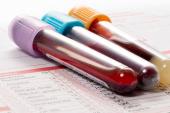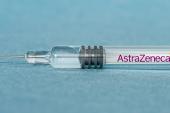AHA/ASA Offers Advice on Rare Blood Clots Seen After Vaccines for COVID-19
The group continues to urge everyone to get vaccinated as soon as possible, saying the benefits outweigh any potential risks.

The American Heart Association/American Stroke Association (AHA/ASA) has released guidance to help physicians respond to, and understand, the reports of rare blood clots and low platelet counts after COVID-19 vaccination.
The document, published online in Stroke, focuses on the diagnosis and management of cerebral venous sinus thrombosis (CVST) with vaccine-induced immune thrombotic thrombocytopenia (VITT), a condition that has been reported in people who have received the COVID-19 vaccines developed by Janssen/Johnson & Johnson and Oxford/AstraZeneca. The issue resulted in temporary pauses in use of the vaccines in the United States and Europe, which have since been lifted. Regulators have determined that the benefits of receiving the shots outweigh any potential risks.
Karen Furie, MD (Rhode Island Hospital, Brown University, Providence, RI), lead author of the new guidance, said members of the AHA/ASA Stroke Council started communicating about the issue after information on the US cases was released by the Centers for Disease Control and Prevention (CDC) and the Food and Drug Administration. They discussed the importance of alerting people to the symptoms of CVST because it comes with a broad array of neurological symptoms and may be missed.
“We thought it was important, given that this is rare and it’s usually not the first thing that people think about when a patient comes into the emergency department,” Furie said. “We wanted to get the message out there to be on alert for this and to provide people with the most current information on management.”
In particular, Furie said, because of the similarities between these vaccine-associated cases and heparin-induced thrombocytopenia (HIT), “we thought it was really critical that folks be aware that they should be checking platelet counts and antibodies to platelet factor 4 and not initiating heparin unless the platelets are okay and the PF4 is negative. Potentially, starting heparin in this setting could lead to exacerbation of the condition.”
Citing the rarity of the condition and the fact that “management was very much diametrically opposed to the conventional way of treating this,” Furie said, “we thought it was really important for our Stroke Council to get out ahead of it and have a statement prepared as quickly as possible.”
What to Watch Out For
The document starts with a discussion about the epidemiology of, and risk factors for, CVST, with the authors pointing out that SARS-CoV-2 infection itself increases risk of the condition. They cite a preprint study from University of Oxford researchers suggesting that the risk of CVST is about eight to 10 times higher with COVID-19 than with any of the vaccines designed to protect against it, and about 100 times higher than in the general population.
When it comes to recognizing CVST, headache is a major feature, occurring in 90% of patients. That’s consistent with initial reports of the US cases associated with the Janssen vaccine, as well as with an updated analysis of 12 cases released Friday by members of the CDC COVID-19 Response Team in JAMA.
We wanted to get the message out there to be on alert for this and to provide people with the most current information on management. Karen Furie
It’s not unusual to have a headache in the first 24 hours after vaccination, Furie noted, but the pain that accompanies CVST develops several days later, is progressive, and doesn’t respond to analgesics. That type of headache should prompt a more-thorough evaluation that includes blood tests and a lower threshold for imaging of the venous system with MRI or CT, she advised. She highlighted the fact that these recent cases tend to be clustered in young-to-middle-age women, a population that is prone to migraine. “So clinicians shouldn’t ignore symptoms of headache, particularly of the kind I just described, in this younger population,” she said.
Diagnosis may be complicated because CVST can mimic other neurological conditions, she and her colleagues note in the paper. Additional signs and symptoms can include focal neurological deficits like hemiparesis, aphasia, and vision loss; seizures; and subacute encephalopathy with confusion and lethargy.
Once a diagnosis has been made, management recommendations are largely based on HIT treatment guidelines because of the dearth of information on treating CVST with VITT specifically. In the acute phase, “intravenous immunoglobulin 1 g/kg body weight daily for 2 days has been recommended after laboratory testing for PF4 antibodies has been sent,” Furie et al say, adding that some experts recommend use of steroids.
Heparin products should be avoided , but “anticoagulation should be used in CVST even in the presence of secondary intracranial hemorrhage as it is necessary to prevent progressive thrombosis to control this bleeding,” the authors advise. Anticoagulation therapy should follow HIT guidelines for alternatives to heparin. Once platelet counts have recovered, patients can be switched to an oral anticoagulant.
Vaccination Remains Crucial
Furie was careful to point out that there are still a lot of unknowns around CVST with VITT and the links to COVID-19 vaccines.
“While the unique elements of this condition raise suspicion, it’s by no means proven, and we certainly didn’t want people to avoid getting vaccinated as a result of these small cases with unclear causality,” she said. “We were tentative [in this new document]. We pretty much tried to report the facts and the current thinking about management, but we did not want to discourage immunization, especially since this condition is actually more common if you get COVID-19. And so the public health message should continue to be that vaccination can help prevent thrombotic complications of COVID infection, including this rare thrombosis in the venous system.”
Furie said the AHA/ASA Stroke Council will continue to monitor this issue and aims to have a living document online that can be continually updated with additional information and recommendations as new evidence emerges: “There’s so much we don’t know about this that I expect there’ll be more rigorous evaluation of cases, both symptomatic and asymptomatic, and growing experience in management around the use of things like steroids, where it’s unclear what the risk-benefit is, or potentially the administration of platelets in patients who have intracerebral hemorrhage, which is one of the manifestations of this disorder.”
The major takeaway for now, according to Furie, is that “COVID-19 infection increases risk of thrombosis, and despite the reports of a small number of cases of CVST in the US and Europe, vaccination remains the best strategy for maintaining brain health.”
Furie et al recommend that all cases of thrombosis and other suspected adverse events after COVID-19 vaccination be reported to the Vaccine Adverse Event Reporting System (VAERS).
Todd Neale is the Associate News Editor for TCTMD and a Senior Medical Journalist. He got his start in journalism at …
Read Full BioSources
Furie KL, Cushman M, Elkind MSV, et al. Diagnosis and management of cerebral venous sinus thrombosis with vaccine-induced immune thrombotic thrombocytopenia. Stroke. 2021;Epub ahead of print.
Disclosures
- Furie reports no relevant conflicts of interest.





Comments